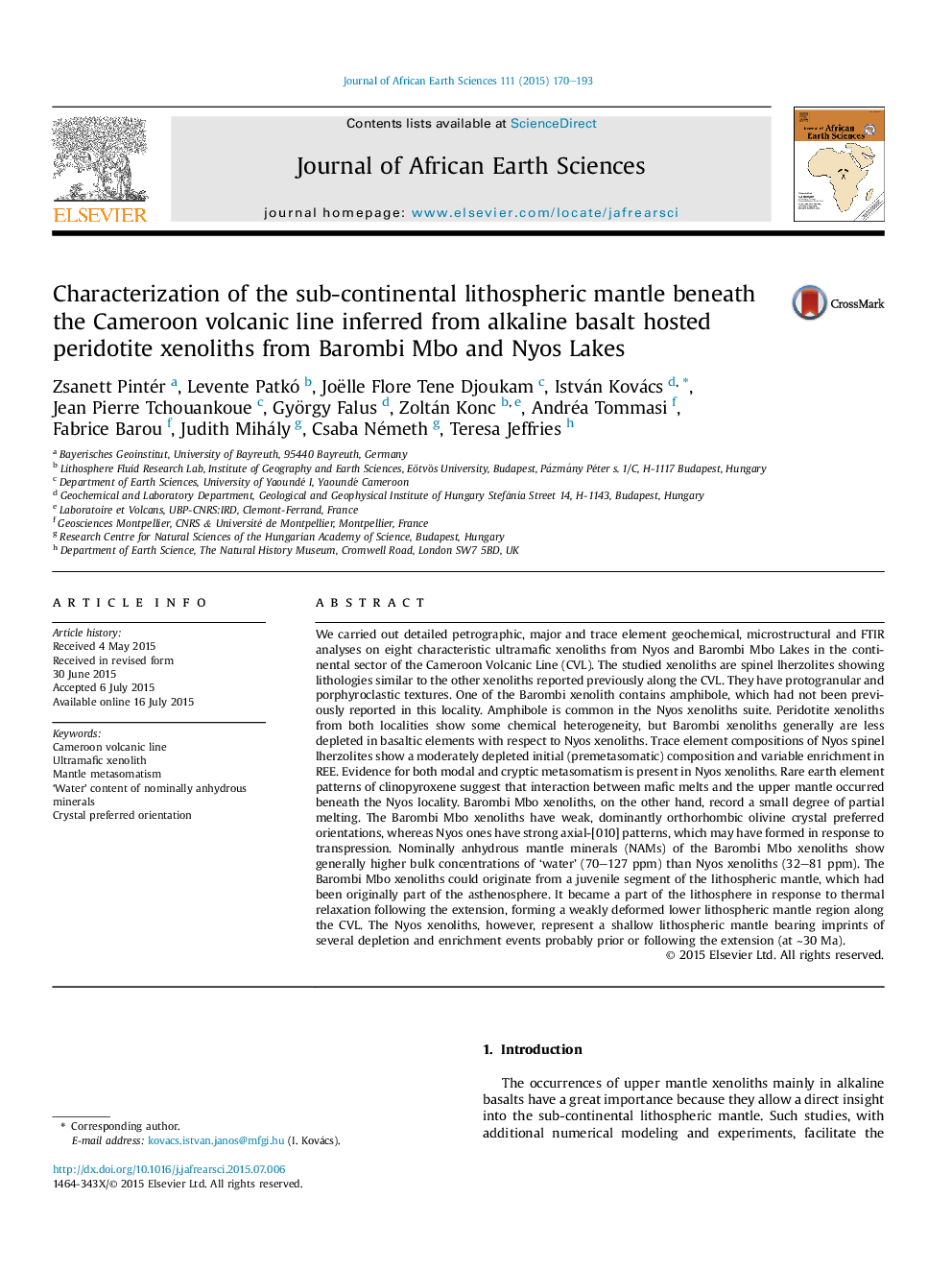| Article ID | Journal | Published Year | Pages | File Type |
|---|---|---|---|---|
| 4728493 | Journal of African Earth Sciences | 2015 | 24 Pages |
•Sampled upper mantle segments beneath the Nyos and Barombi localities are distinct.•Barombi xenoliths represent juvenile lithospheric mantle with moderate deformation.•Nyos xenoliths show evidence for higher degree of deformation and refertilization.•Barombi xenoliths have higher concentration of water in NAMs.•Calculated seismic anisotropies are in line with moderate measured SKS splittings.
We carried out detailed petrographic, major and trace element geochemical, microstructural and FTIR analyses on eight characteristic ultramafic xenoliths from Nyos and Barombi Mbo Lakes in the continental sector of the Cameroon Volcanic Line (CVL). The studied xenoliths are spinel lherzolites showing lithologies similar to the other xenoliths reported previously along the CVL. They have protogranular and porphyroclastic textures. One of the Barombi xenolith contains amphibole, which had not been previously reported in this locality. Amphibole is common in the Nyos xenoliths suite. Peridotite xenoliths from both localities show some chemical heterogeneity, but Barombi xenoliths generally are less depleted in basaltic elements with respect to Nyos xenoliths. Trace element compositions of Nyos spinel lherzolites show a moderately depleted initial (premetasomatic) composition and variable enrichment in REE. Evidence for both modal and cryptic metasomatism is present in Nyos xenoliths. Rare earth element patterns of clinopyroxene suggest that interaction between mafic melts and the upper mantle occurred beneath the Nyos locality. Barombi Mbo xenoliths, on the other hand, record a small degree of partial melting. The Barombi Mbo xenoliths have weak, dominantly orthorhombic olivine crystal preferred orientations, whereas Nyos ones have strong axial-[010] patterns, which may have formed in response to transpression. Nominally anhydrous mantle minerals (NAMs) of the Barombi Mbo xenoliths show generally higher bulk concentrations of ‘water’ (70–127 ppm) than Nyos xenoliths (32–81 ppm). The Barombi Mbo xenoliths could originate from a juvenile segment of the lithospheric mantle, which had been originally part of the asthenosphere. It became a part of the lithosphere in response to thermal relaxation following the extension, forming a weakly deformed lower lithospheric mantle region along the CVL. The Nyos xenoliths, however, represent a shallow lithospheric mantle bearing imprints of several depletion and enrichment events probably prior or following the extension (at ∼30 Ma).
